A short history of art
A very incredibly short history of art
 To go through all the history of art would take us hundreds of pages (in fact, one of the most commonly used comprehensive art histories, Honour & Fleming's A World History of Art is almost a thousand pages long). Additionally, the history of art is very different around the world. That's why, to get a good look at art history, we will only go through some of the main points and concentrate on western art. To make this easier to understand, use the timeline on the right to keep up. Click on the image to get a bigger and clearer version. The years presented here are rounded up, as sometimes it is impossible to say exactly when one movement ended and another one began.
To go through all the history of art would take us hundreds of pages (in fact, one of the most commonly used comprehensive art histories, Honour & Fleming's A World History of Art is almost a thousand pages long). Additionally, the history of art is very different around the world. That's why, to get a good look at art history, we will only go through some of the main points and concentrate on western art. To make this easier to understand, use the timeline on the right to keep up. Click on the image to get a bigger and clearer version. The years presented here are rounded up, as sometimes it is impossible to say exactly when one movement ended and another one began. Medieval art 500-1400
After the prosperous art period of the antiquity and the dawn of Christianity, most art was concentrated on religion. The period of medieval art lasted all the way from around the year 500 to the 1400s, when renaissance began. Because the timespan is so incredibly long, many different types of art were created during this period. These include Christian art, Romanesque art and Gothic art (which you might have seen in famous buildings such as the Notre Dame).
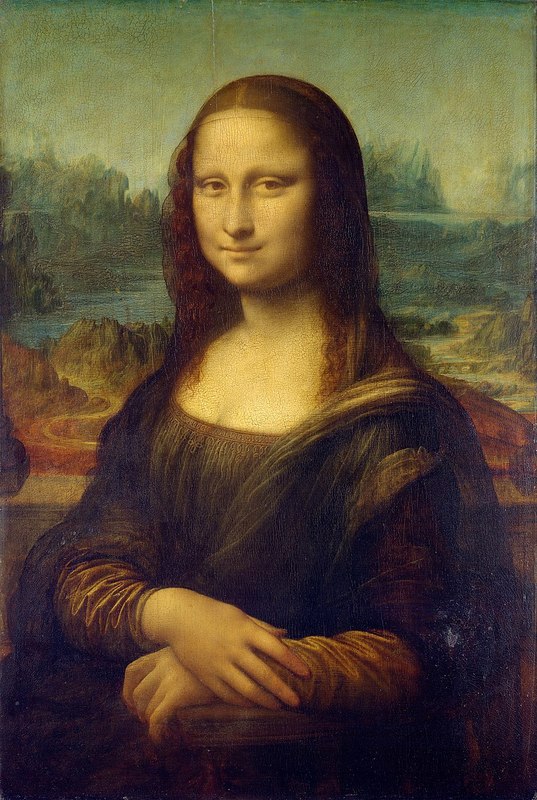
Rebirth of the antiquity 1400-1600
The Renaissance period of 1400-1600 was an era of awareness: interest in nature, science and humanistic learning were considered extremely important. Subjects were chosen from areas other than religion: portraits, story illustrations and contemporary events were popular subjects in painting. Artists found inspiration from the art of the Antiquity. Figures were drawn or painted in dynamic and expressive poses, and artists chased perfection. Some very famous works of art date from this era, such as the Mona Lisa (c. 1503-06) and the Last Supper (c. 1495-98) by Leonardo da Vinci and Michelangelo's David (1501-04). Renaissance proper was followed by mannerism (1527-1600), in which renaissance ideals were exaggarated and stylised for increased expression.
Opposing styles 1600-1750
Renaissance and mannerism were followed by Baroque (1600-1750). This style of art was characterised by its dramatic nature. Complexity, emotionality and grandeur were central elements of Baroque art. Such artists as Diego Velázques (Las Meninas, 1656), Rembrandt (The Night Watch, 1642) and Johannes Vermeer (Girl with a Pearl Earring, 1665) are all associated with this period. Deep, rich colours and dark tones are often characteristic of Baroque. Maybe that is why it was followed by an era of "lightness" and cheerfulness, the Rococo period of 1699-1780. The themes of Rococo art were playful and fun, often portraying garden parties or other outdoor activities. The style was decorative and the colours light and bright. Pastel colours were often used. A good example of Rococo art is Fragonard's The Swing (1767), featured in the Composition section of this material.
Antiquity (again) 1750-1850
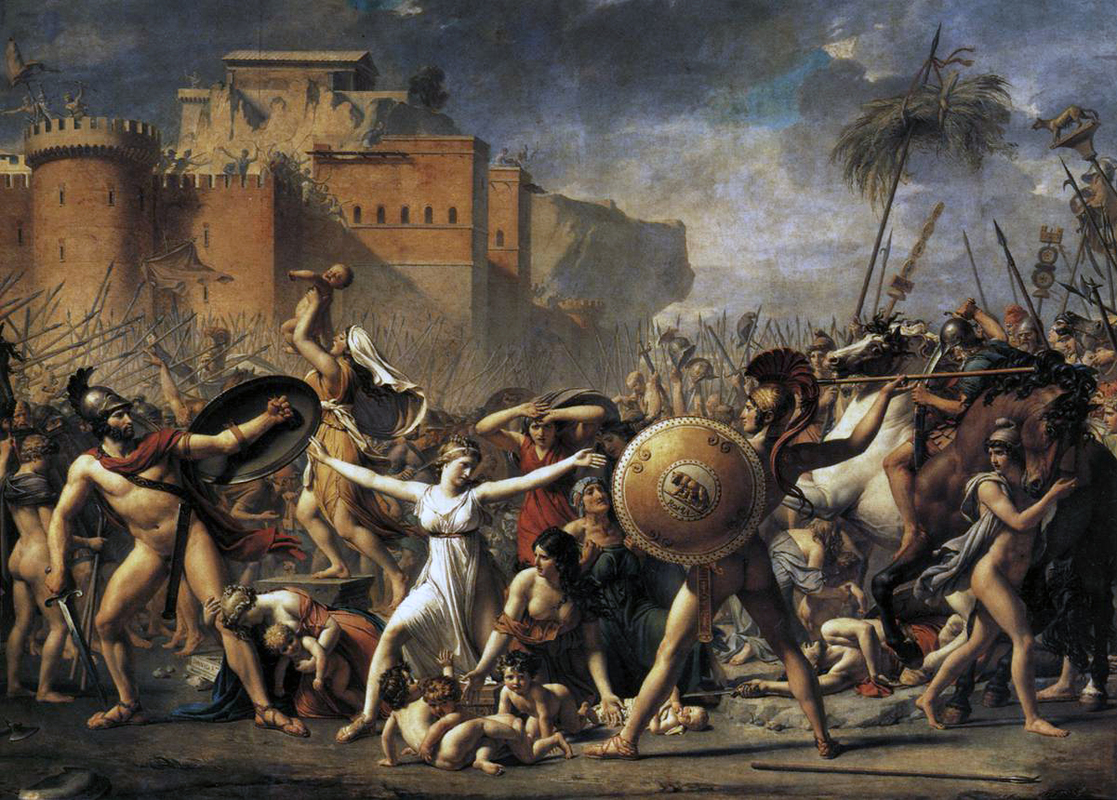 After the drama and extravaganza of Baroque and Rococo, artists looked again back to the simple and beautiful forms of the Antiquity. New archeological findings, such as Pompeii and Herculaneum, inspired artists and researchers alike. Around this time, many important books were written on the art of the Antiquity, and artists were encouraged to aim especially for the styles common in ancient Greece. In painting, however, this was not as clear, as very few paintings from the Antiquity had survived. Sculptures were the main form of inspiration, as well as stories and histories. This style, because of its imitation of the classical art, is called Neo-classicism. The period for this style was from 1750 to 1850. Another, opposing idea was in motion from 1780 to 1850. This style was called Romanticism, and it emphasised emotion instead of a strict classical approach. A common theme in Romanticist art was raw nature, such as the raging sea. Romanticism concentrated on the ideal.
After the drama and extravaganza of Baroque and Rococo, artists looked again back to the simple and beautiful forms of the Antiquity. New archeological findings, such as Pompeii and Herculaneum, inspired artists and researchers alike. Around this time, many important books were written on the art of the Antiquity, and artists were encouraged to aim especially for the styles common in ancient Greece. In painting, however, this was not as clear, as very few paintings from the Antiquity had survived. Sculptures were the main form of inspiration, as well as stories and histories. This style, because of its imitation of the classical art, is called Neo-classicism. The period for this style was from 1750 to 1850. Another, opposing idea was in motion from 1780 to 1850. This style was called Romanticism, and it emphasised emotion instead of a strict classical approach. A common theme in Romanticist art was raw nature, such as the raging sea. Romanticism concentrated on the ideal.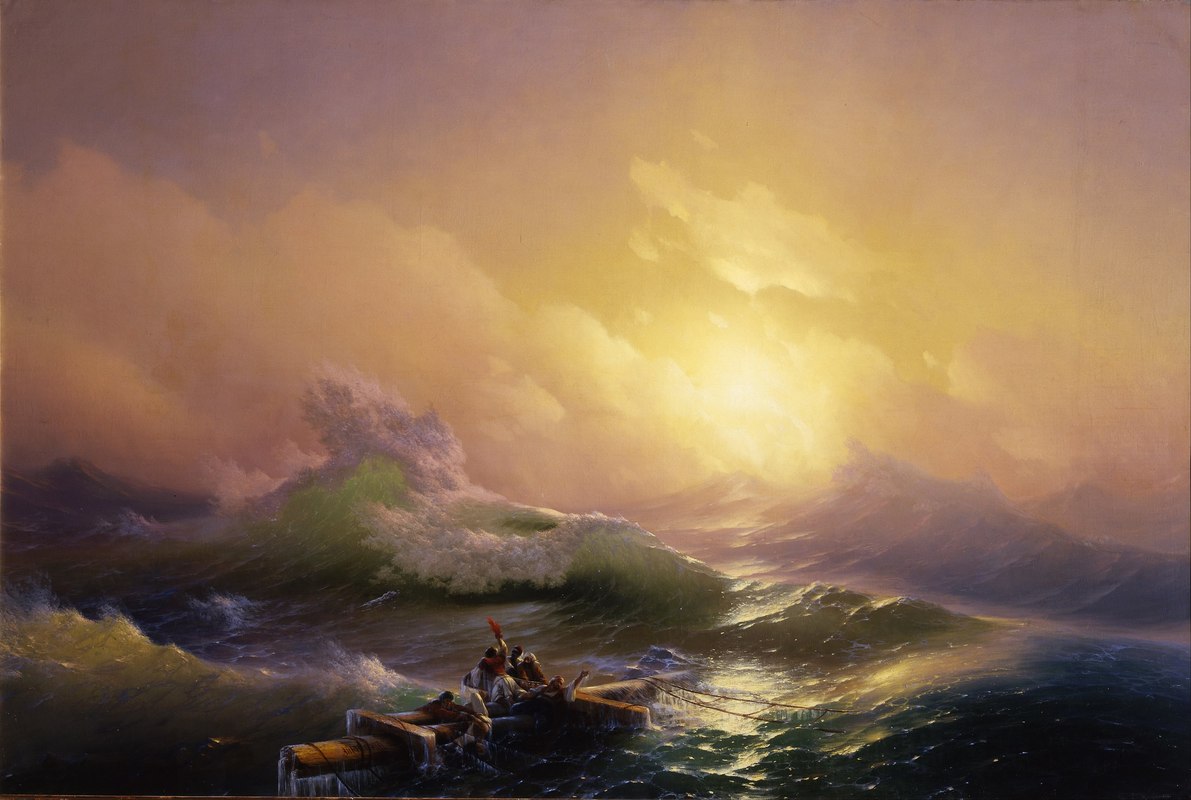
The ideal world vs the real world (1850-1900)

As a counter-reaction to the idealisation of the subjects, around the 1850s, artists turned to realism. The goal of realism was to portray reality as is, without any imitation of the past. Often, the subjects of realist art included the lower classes and ordinary people, their hardships and problems. The style of realism was popular until the beginning of the 20th Century, and has been revisited by artists ever since. The style goes hand in hand with naturalism, where the goal was to ignore classical traditions and conventions. Naturalism is often associated with plein-air (painting outdoors).
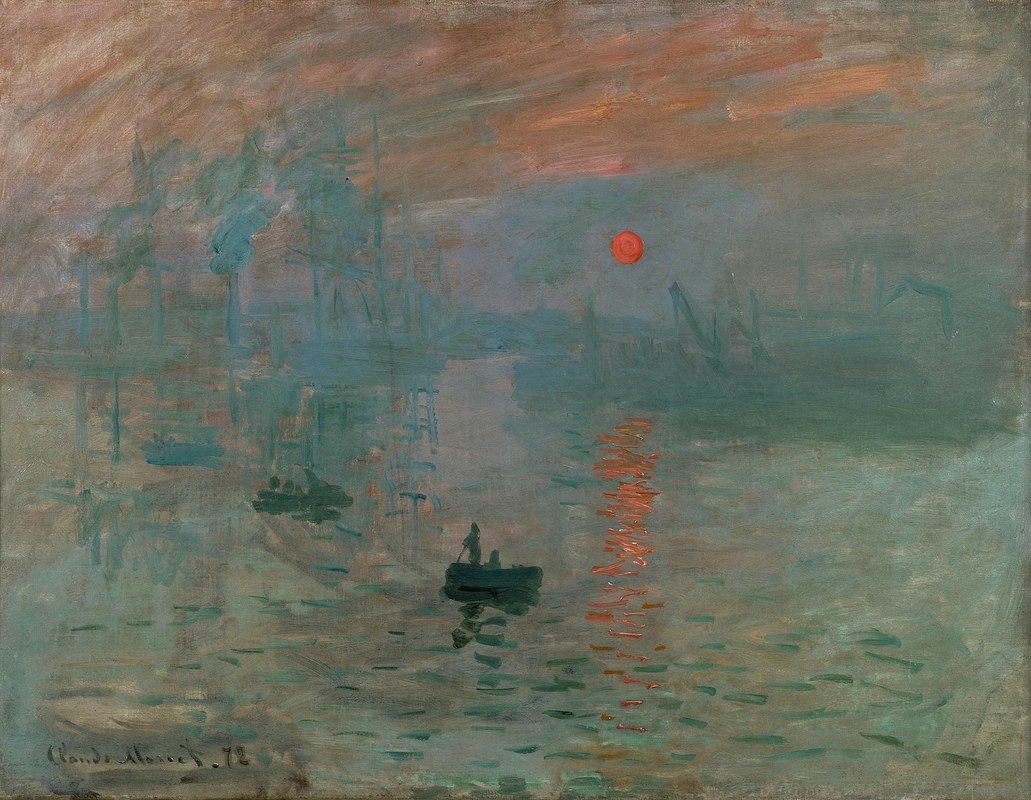 Such artists as Édouard Manet and the Finn Akseli Gallen-Kallela are examples of these styles. An extension of a naturalistic portrayal of realism was impressionism (1865-1885). Impressionists painted at the scene, attempting to catch each moment as it was - such as the different lighting at different times of day. Perhaps the most famous impressionist was Claude Monet. In fact, the term "impressionism" was derived from one of his famous paintings, Impression, Sunrise (1872).
Such artists as Édouard Manet and the Finn Akseli Gallen-Kallela are examples of these styles. An extension of a naturalistic portrayal of realism was impressionism (1865-1885). Impressionists painted at the scene, attempting to catch each moment as it was - such as the different lighting at different times of day. Perhaps the most famous impressionist was Claude Monet. In fact, the term "impressionism" was derived from one of his famous paintings, Impression, Sunrise (1872).The time of the many "isms" 1890-1950
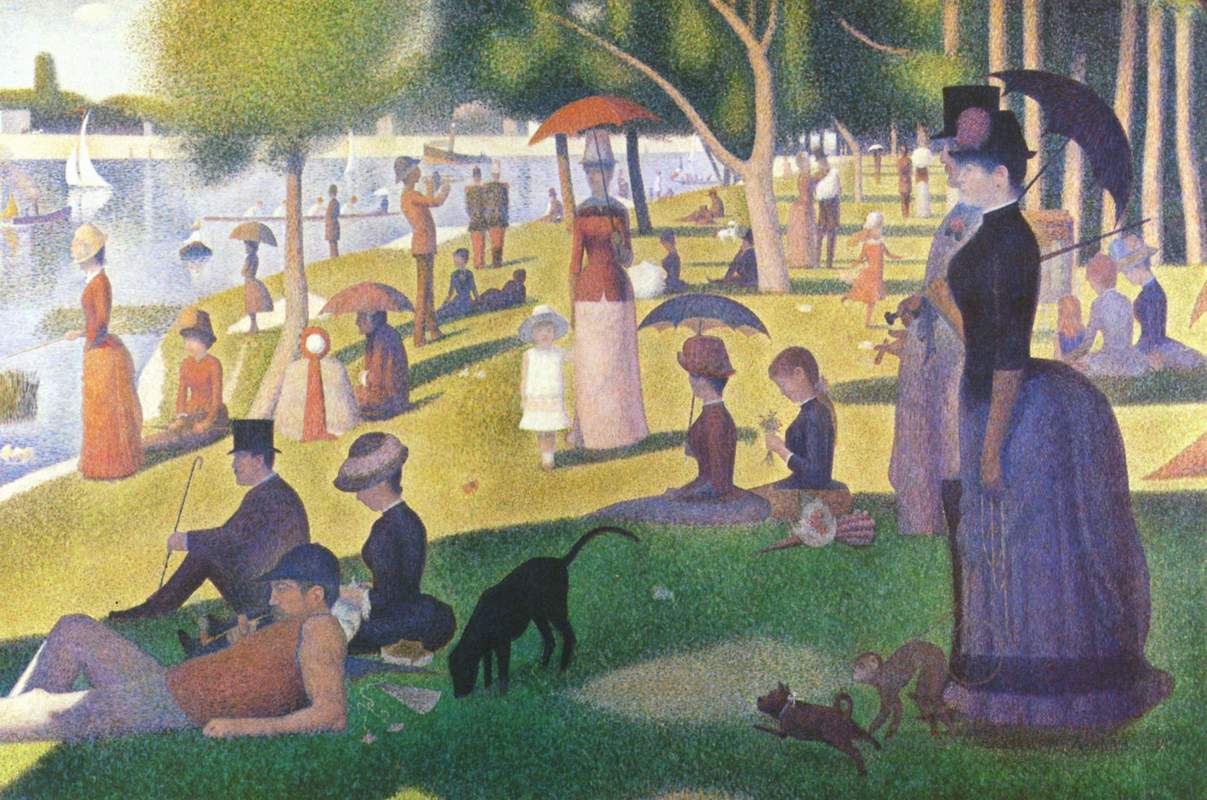
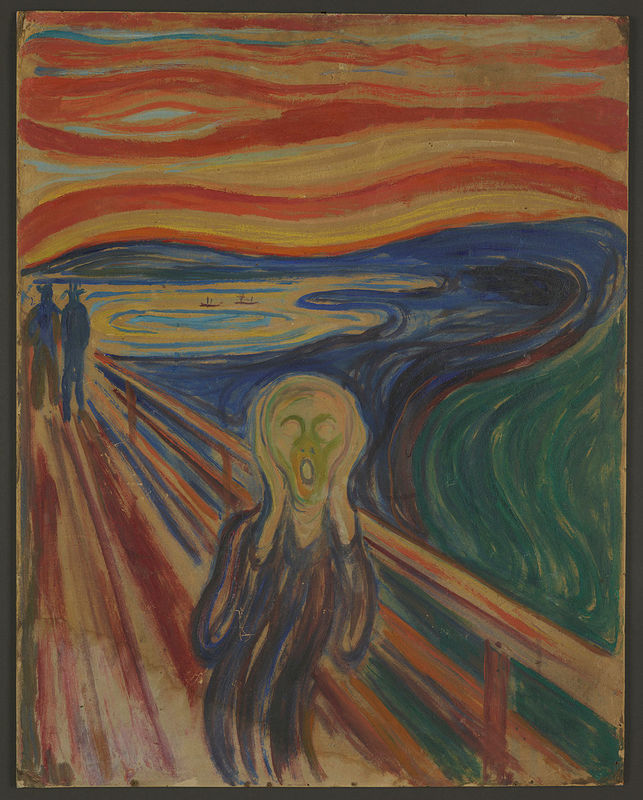 During the late 19th and early 20th Century, styles in art became more varied. Instead of one major "style" or way of making art, multiple disciplines coexisted. Georges Seurat developed pointillism (also known as divisionism), in which short strokes of colour blend together in the eye of the viewer, in the 1880s. Post-impressionism (1885-1910), where emotion and subjective experience was more important than visual realism, developed as a reaction to impressionism. Some famous artists of the genre include Paul Cezánne, Vincent van Gogh and Paul Gauguin. Although these artists were quite different to each other, the common ground was a focus on the subject. A similar style (often overlapping and including some of the same artists) was symbolism, in which the expression of an idea was the main focus. Symbolists often portrayed fantasies and dreams. Such artists as Edvard Munch (The Scream, 1893) and Odilon Redon are often associated with this genre.
During the late 19th and early 20th Century, styles in art became more varied. Instead of one major "style" or way of making art, multiple disciplines coexisted. Georges Seurat developed pointillism (also known as divisionism), in which short strokes of colour blend together in the eye of the viewer, in the 1880s. Post-impressionism (1885-1910), where emotion and subjective experience was more important than visual realism, developed as a reaction to impressionism. Some famous artists of the genre include Paul Cezánne, Vincent van Gogh and Paul Gauguin. Although these artists were quite different to each other, the common ground was a focus on the subject. A similar style (often overlapping and including some of the same artists) was symbolism, in which the expression of an idea was the main focus. Symbolists often portrayed fantasies and dreams. Such artists as Edvard Munch (The Scream, 1893) and Odilon Redon are often associated with this genre.Art Nouveau (1890-1910, often called "Jugend" in Finnish art and architecture) was a very ornamental and decorative style of art. It was often used in architecture and illustrations, such as poster art. The idea was to create a completely new art, free from traditional conventions and previous styles. Some post-impressionists and symbolists experimented with Art Nouveau as well. Natural objects, such as flowers, plants and animals, are common themes.
 During the early 20th Century, multiple new art forms emerged and abstraction became more common. In Cubism (1907-1914), everyday objects were transformed into geometrical shapes. Pablo Picasso is a good example of cubism. Expressionism (1905-1920) focused on portraying emotions with intense colours. Fauvism (1905-1935) was an extension of colour expressionism, in which artists used bright, wild colours and distorted figures. Henri Matisse is perhaps the most well known. Wassily Kandinsky, on the other hand, combined a fauvist use of colour with abstract forms. Futurism (1909-1914) idealised machines, dynamic movements and energy. Abstract artforms included several styles of Russian origin, such as rayonism (1911-1914), constructivism (1915-1927) and suprematism (1913-1922).
During the early 20th Century, multiple new art forms emerged and abstraction became more common. In Cubism (1907-1914), everyday objects were transformed into geometrical shapes. Pablo Picasso is a good example of cubism. Expressionism (1905-1920) focused on portraying emotions with intense colours. Fauvism (1905-1935) was an extension of colour expressionism, in which artists used bright, wild colours and distorted figures. Henri Matisse is perhaps the most well known. Wassily Kandinsky, on the other hand, combined a fauvist use of colour with abstract forms. Futurism (1909-1914) idealised machines, dynamic movements and energy. Abstract artforms included several styles of Russian origin, such as rayonism (1911-1914), constructivism (1915-1927) and suprematism (1913-1922).Dadaism (1916-1924) went against all conventions of art to create absurd, irrational and spontanious works of art, often using ready-made objects and protesting against the art community. Marcel Duchamp's The Fountain (1917) is a brilliant example of the absurd art of Dada - a public toilet urinal with the name "R. Mutt" written on it. Surrealism (1916-1960) took inspiration from Dada and the psychoanalysis theories of Sigmund Freud, creating fantasy imagery, often combining absurd subjects with exaggarated visual realism. Surrealists include such names as Salvador Dalí (The Persistence of Memory, 1931), Frida Kahlo (known for her many self-portraits from the 1920s to the 1950s) and Rene Magritte (The Son of Man, 1964).
Abstract expressionism (1940s-1950s), most often represented by Jackson Pollock, combined raw energy with expression. Some turned to Action Painting, a style in which paint is splashed on the canvas and the process of art-making becomes art itself. Some, such as Mark Rothko, became Colour Field Painters, making large canvases with fields and shapes of colour.
New waves of art 1950-1970
The second half of the 20th Century saw new types of art emerge. Pop art (1950-1970), a style incorporating commercial visual elements, was a controversial genre. Some artists in the genre include Roy Lichtenstein and Andy Warhol (known best for his Marilyn Monroe -prints). Photography became more relevant around this time as well. Minimalism (1960-1970) attempted to reduce art to its purest form and eliminate everything else. Conceptual art (1960-1970) focused on the idea to the extent that visual form might not even exist.
Art from 1970 onwards is often called contemporary art, and it will be looked at more closely in its own section. A defining feature of contemporary art is how it is difficult to define - the amount of different styles and influences is increasing all the time.
Create 4.? Choose one of the art movements from the time of the "isms" (1890-1950). Look it up online, collect information on what the style was and how it was created. Make a short presentation in your portfolio, if you are using one. Once you have gotten to know the movement, start working on your own art.
First, sketch a self-portrait - you can use a mirror or a photo of yourself. Think how a self-portrait might be made in the style you have chosen. Then, paint your portrait with either aquarelles or acrylic paints - your own self-portrait in the style of...
Who did it first?
Think 4.? Now it is time to do some research! Pick a theme or several, and try to find out who was the first to do these things, and when! There might not be a definitive answer - try to find out what you can! Write down any information you come across, and remember to jot down the link as well!
Who was the first to...
1. to take a photograph
2. create computer-generated art
3. use clay to make a sculpture
4. to take a selfie
5. to figure out how perspective works
6. to steal The Scream
7. have their art displayed in the White House
8. create art in space
When you're done, click on the link below to see the answers!
answers.pdf
Objectives (NCC 2014)
Create 4.? (O1, O4, O5, O8, O9) Researching a historically significant style of art. Making observations on these findings. Creating a self-portrait using a historically significant technique. Learning about the history of art and different ways of making art. Learning how to combine different techniques with a personal style of visual production.
Think 4.? (O1, O2, O5, O8) Exploring different art-related phenomena. Learning about art history through research.
Think 4.? (O1, O2, O5, O8) Exploring different art-related phenomena. Learning about art history through research.
Sources
Britannica. (2020). Art Nouveau. https://www.britannica.com/art/Art-Nouveau. Visited 29 October 2020.
Britannica. (2020). Baroque art and architecture. https://www.britannica.com/art/Baroque-art-and-architecture. Visited 16 October 2020.
Britannica. (2020). Neoclassical art. https://www.britannica.com/art/Neoclassicism. Visited 16 October 2020.
Britannica. (2020). Realism. https://www.britannica.com/art/realism-art. Visited 26 October 2020.
Britannica. (2020). Renaissance Art. https://www.britannica.com/art/Renaissance-art. Visited 16 October 2020.
Honour, H., and Fleming, J. (1999). A World History of Art.
Invaluable. (2020). Medieval Art: Characteristics and Influences. https://www.invaluable.com/blog/medieval-art/. Visited 16 October 2020.
My Modern Met. (2020). Celebrate the Elegance and Exuberance of French Rococo Art. https://mymodernmet.com/rococo-art/. Visited 16 October 2020.
My Modern Met. (2020). Exploring the Vision and Diverse Styles of Post-Impressionism Pioneers. https://mymodernmet.com/post-impressionism/. Visited 29 October 2020.
My Modern Met. (2020). Mannerism: The Style That Put an Elaborate Twist on Renaissance Art. https://mymodernmet.com/what-is-mannerism/. Visited 16 October 2020.
Tate. (2020). Claude Monet 1840-1926. https://www.tate.org.uk/art/artists/claude-monet-1652. Visited 29 October 2020.
Tate. (2020). Naturalism - Art Term. https://www.tate.org.uk/art/art-terms/n/naturalism. Visited 26 October 2020.
Tate. (2020). Romanticism - Art Term. https://www.tate.org.uk/art/art-terms/r/romanticism. Visited 16 October 2020.
Tate. (2020). Symbolism - Art Term. https://www.tate.org.uk/art/art-terms/s/symbolism. Visited 29 October 2020.
Images:
1 Leonardo da Vinci, c.1503-06. Mona Lisa. Image courtesy of Wikimedia Commons.
2 Jacques-Louis David, 1799. The Intervention of the Sabine Women. Image courtesy of Wikimedia Commons.
3 Ivan Aivazovsky, 1850. The Ninth Wave. Image courtesy of Wikimedia Commons.
4 Akseli Gallen-Kallela, 1884. Boy with a Crow. Image courtesy of Finnish National Gallery.
5 Claude Monet, 1872. Impression, Sunrise. Image courtesy of Wikimedia Commons.
6 Georges Seurat, 1884. Sunday Afternoon on the Island of la Grande Jatte. Image courtesy of Wikimedia Commons.
7 Edvard Munch, 1893. The Scream. Photo: Munchmuseet. Licensed under CC BY 4.0.
8 Wassily Kandinsky, 1910. Study for Improvisation V. Image courtesy of Wikimedia Commons.
Britannica. (2020). Baroque art and architecture. https://www.britannica.com/art/Baroque-art-and-architecture. Visited 16 October 2020.
Britannica. (2020). Neoclassical art. https://www.britannica.com/art/Neoclassicism. Visited 16 October 2020.
Britannica. (2020). Realism. https://www.britannica.com/art/realism-art. Visited 26 October 2020.
Britannica. (2020). Renaissance Art. https://www.britannica.com/art/Renaissance-art. Visited 16 October 2020.
Honour, H., and Fleming, J. (1999). A World History of Art.
Invaluable. (2020). Medieval Art: Characteristics and Influences. https://www.invaluable.com/blog/medieval-art/. Visited 16 October 2020.
My Modern Met. (2020). Celebrate the Elegance and Exuberance of French Rococo Art. https://mymodernmet.com/rococo-art/. Visited 16 October 2020.
My Modern Met. (2020). Exploring the Vision and Diverse Styles of Post-Impressionism Pioneers. https://mymodernmet.com/post-impressionism/. Visited 29 October 2020.
My Modern Met. (2020). Mannerism: The Style That Put an Elaborate Twist on Renaissance Art. https://mymodernmet.com/what-is-mannerism/. Visited 16 October 2020.
Tate. (2020). Claude Monet 1840-1926. https://www.tate.org.uk/art/artists/claude-monet-1652. Visited 29 October 2020.
Tate. (2020). Naturalism - Art Term. https://www.tate.org.uk/art/art-terms/n/naturalism. Visited 26 October 2020.
Tate. (2020). Romanticism - Art Term. https://www.tate.org.uk/art/art-terms/r/romanticism. Visited 16 October 2020.
Tate. (2020). Symbolism - Art Term. https://www.tate.org.uk/art/art-terms/s/symbolism. Visited 29 October 2020.
Images:
1 Leonardo da Vinci, c.1503-06. Mona Lisa. Image courtesy of Wikimedia Commons.
2 Jacques-Louis David, 1799. The Intervention of the Sabine Women. Image courtesy of Wikimedia Commons.
3 Ivan Aivazovsky, 1850. The Ninth Wave. Image courtesy of Wikimedia Commons.
4 Akseli Gallen-Kallela, 1884. Boy with a Crow. Image courtesy of Finnish National Gallery.
5 Claude Monet, 1872. Impression, Sunrise. Image courtesy of Wikimedia Commons.
6 Georges Seurat, 1884. Sunday Afternoon on the Island of la Grande Jatte. Image courtesy of Wikimedia Commons.
7 Edvard Munch, 1893. The Scream. Photo: Munchmuseet. Licensed under CC BY 4.0.
8 Wassily Kandinsky, 1910. Study for Improvisation V. Image courtesy of Wikimedia Commons.